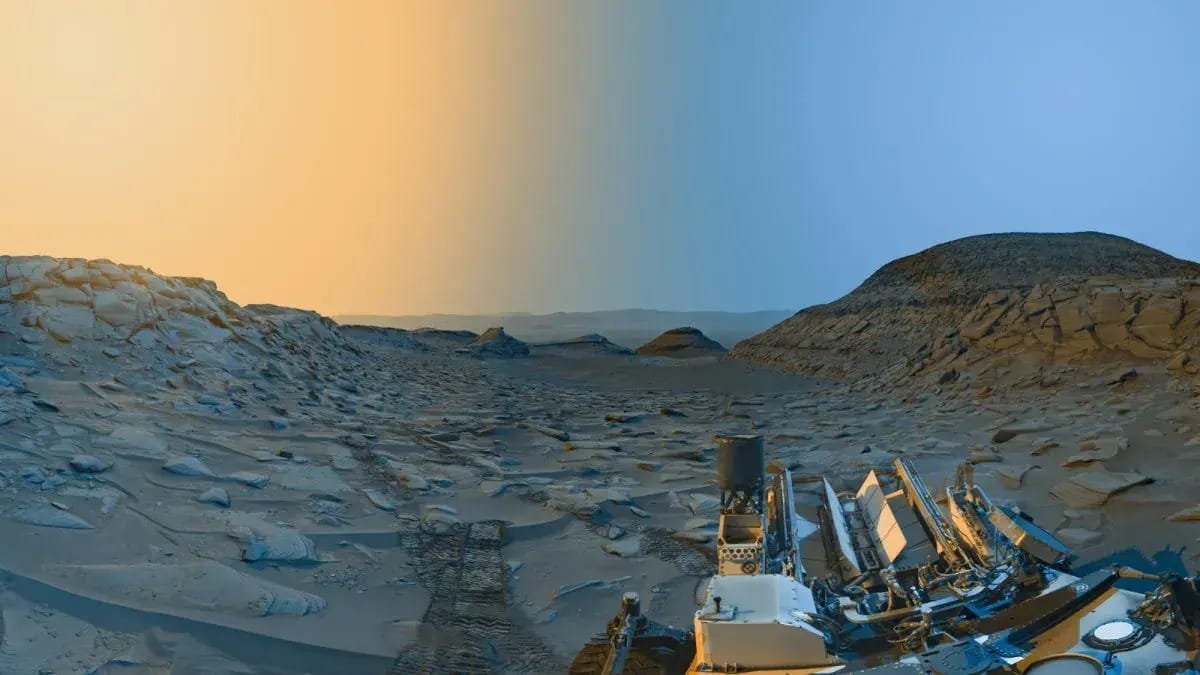
5 Facts: Outer Space Edition!
Space is truly the final frontier, and there’s still so much for us to discover! Here’s some fun facts about outer space:
🔇 Space is completely silent! Because space is a vacuum, there’s no air particles for sound waves to travel through.
🥵 Venus is the hottest planet, even though Mercury is closer to the Sun! The average temperature on Venus is 864°F, while the average temperature on Mercury is 800°F. Venus is hotter because its thick atmosphere traps the heat, even though Mercury is, on average, 72 million miles closer to the Sun!
🪐 Mars has the tallest mountain and largest volcano in the solar system! Olympus Mons is almost 3 times taller than Mount Everest! It stands at 72,000 feet (about 13.6 miles tall), compared to Mount Everest’s 29,032 feet. It’s also the largest volcano, covering an area the size of Arizona!
🌠 Stars don’t actually twinkle. The twinkling we see is from Earth’s atmosphere. As the light from stars enters our atmosphere, it gets bent and distorted by varying air densities and temperatures, which makes it look like its twinkling. However, planets appear to shine steadily because they are closer to earth, so their light isn’t affected as much by this atmospheric interference.
🧑🚀 Astronauts age ever-so-slightly slower in space! According to Einstein’s Theory of Relativity, time passes at different speeds depending on how fast you're moving. This means that time passes slower for astronauts in space. In fact, scientists estimate that if you spent 6 months in space, you would be 0.007 seconds younger than if you had stayed on earth! This isn’t a big difference, but it’s big enough that it needs to be taken into account so our GPS satellites can provide accurate location data! 🛰️
Sources: Science Alert | UC Berkeley Public Health | Smore Science

Trivia Corner: Dinosaur Poo??
The technical term for fossilized dinosaur poo is coprolite, which comes from the Greek words kopros (dung) and lithos (stone). Scientists analyze coprolites to better understand what dinosaurs ate and their ecosystems (based on clues like pollen, spores, and plant fragments found in coprolites).
One of the largest known coprolites is 17 inches long from a Tyrannosaurus Rex, and it even contains bone fragments. This proves the T. Rex was a serious meat eater! 🥩

People cut and polish coprolites into jewelry! Imagine wearing ancient poo!
Sources: Kiddle | RealityRocks

Myth or Truth: Sugar Highs? 🧁
Does sugar actually make kids hyperactive?
Surprisingly, scientific research has consistently found no causal link between eating sugar and hyperactivity in children!
Multiple studies have found that sugar doesn’t significantly affect children’s behavior. This includes double-blinded studies (where neither the children nor their parents knew whether the children were being given sugar or a placebo).
One factor which may be perpetuating this myth is perception. In one study, when parents were told that their children had eaten sugar, they rated their children as more hyperactive - even when their children were actually been given a placebo!
Of course, other factors like birthday parties or the holidays, where sugary treats are more common, are already often exciting and stimulating for kids. These environments probably contribute more to the children’s excitement and energy than the sugar itself. 🎉
Sources: Sugar Nutrition Resource | Yale Scientific

Quotables: Isaac Asimov 📚
“The most exciting phrase to hear in science, the one that heralds new discoveries, is not ‘Eureka!’ but ‘That’s funny…’”
Isaac Asimov
Picture of the Week: Martian sky!

Source: NASA/JPL-Caltech
Today’s image is of the Marker Band Valley on Mars, captured by NASA’s Curiosity rover. You can read more about it here, from the BBC Sky at Night Magazine!
Have a science or animal-related picture you want us to highlight? Submit to [email protected] or @science.answers!
Answer to the Trivia: Georgia (named after King George II of England), Louisiana (named after King Louis XIV of France), Maryland (named after Henrietta Maria, Queen Consort of Charles I), New York (named after the Duke of York), North and South Carolina (named after Charles I), Pennsylvania (named after William Penn), Virginia and West Virginia (named after Queen Elizabeth I, the “Virgin Queen”), and Washington (named after George Washington). Source: Wickedlocal
